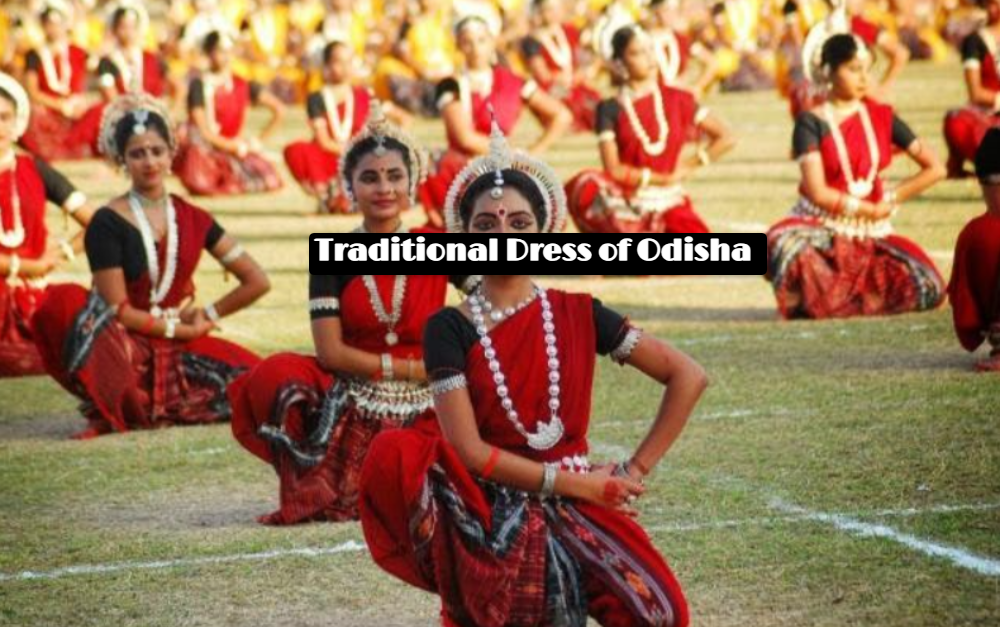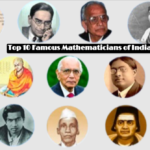Odisha, the land of temples is famous for its Jagannath temple and Konark Temple. This is one of India’s most important states. The state is known for its dance, sculpture, and historical monuments. Odisha used to be known by many names in ancient times: Utkala Tosala Odra Kosala Tosali Kalinga Orrisa. The traditional dress style of Odisha is as good as any other state. Check out the traditional dress of Odisha.
Women’s Traditional Dress in Odisha
Women in Odisha are fond of wearing a saree. There are many sarees to choose from, including the Khandua saree, Pasapali saree, Sonepuri ikat saree, Berhampur saree, and Kataki.
1. Khandua Saree
The sarees are adorned with a metallic accent and curving edges. Khandua is a symbol of bravery and courage. These sarees are made of Malda, a soft silk fabric with an intricate design. This saree is worn by women in Odisha during festivals and weddings. The saree’s borders are adorned with simple ikat embroidery.
Pallavs are decorated with intricate ikat patterns. These sarees feature patterns in orange, yellow and red. The pallavs and borders of these sarees are usually crimson and blue, adding to the overall appearance.
2. Sambhalpuri ikat
Sambhalpuri Ikat sarees use a technique called Bandhkala. This saree features a design inspired by nature, such as rudraksha or chakra. First, the warp and weft threads are dyed and then woven. The higher the price, the harder it is to do.
3. Sonepuri
Sonepuri, or bomkai, is a mixture of soft silk embroidery. It’s most prominent on the border and pallav. The saree has been influenced by tribal arts, and its motifs are inspired by nature. This saree is available in black, blue, orange and red. Pallavs are woven with patterns that are elevated, and the saree body has ikat motifs.
4. Pasapali
Pasapali, an ikat saree with a headwoven pattern, is a saree that originated in Bargarh (Orissa). The saree has a double ikat pattern that creates a checkboard design, while the border appears redefined. Pasapali is a vibrant display of colours and patterns.
5. Berhampur
Berhampur is known as the Silk City of India and home to these legendary Patta Silk saris. These classic sarees drape in a temple-like pattern. These sarees are the pride and joy of Odisha, and are often worn to weddings.
Odisha women wear kurtas and duppattas in addition to sarees. The uttariyo, or larger piece of fabric used to cover the head of the bride, is made from a large cloth. The zari embroidery is beautiful. Uttariyo is best worn with a matching cap.
Traditional dress of Odisha for men
1. Sambhalpuri Kurtas
Odisha men wear sambhalpuri Kurtas of different styles, colours and fabrics. These are similar to regular kurtas, with light patchwork and small square designs.
2. Kurtas with Dhoti or Pyjamas
In certain rural areas of Odisha men wear cotton kurtas, with a dhoti draped at the waist. Odisha’s dhotis are distinctive and have attractive brick-coloured borders. Odisha’s traditional outfit is not complete without a pyjama. They are typically plain white.
3. Sherwani
Sherwanis were designed to provide a classic appearance to the groom. The outfit is similar to that of another state with the exception of a velvet kurta. It also has an expensive stone embedded into it. The kurta comes with a turban, a bottom pyjama and a turban.
Traditional tribal clothing in Odisha
In Odisha, tribal people wear clothing that reflects their social status. For example, priests, chiefs of clans or revenue collectors. Clan chiefs, for example, wear “Gamango,” which represents heroism or dignity. In their culture, the “Rings”, or “Bondos”, and the embroidered shawl of Dangarias are indispensable. The Dangria Shawl is linked to the marriage bond of a couple shares, while Lanjia Saora’s dancing costumes define its rich heritage.
Odisha traditional dancing attire
The Odishi dance costume is more than just a dress. It represents the culture of Odisha. Over the centuries, the traditional dance form “Odissi” has captivated people with its stunning moves. The head and hair ornaments include anklets, tayila Kapa, chokers belts and bells. These jewels are made from pure gold and sterling silver. Cuttack is the origin of many art forms in Odisha.
Conclusion
Handloom weaving is an ancient business in India. This work is supported by many weavers and craftsmen. This has changed slightly due to the modern lifestyle. The natives do not miss the opportunity to show off their talent during special occasions such as the Durga Puja.


